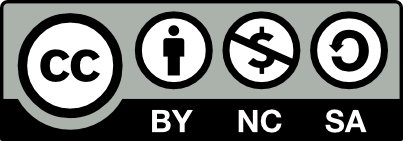Submissions
Submission Preparation Checklist
As part of the submission process, authors are required to check off their submission's compliance with all of the following items, and submissions may be returned to authors that do not adhere to these guidelines.- The submission has not been previously published or considered by any other journal (or an explanation has been provided in the Comments to the editor).
- An independent text file is sent with: title of the manuscript; name of the authors and institutional affiliation of each of them; e-mail of the first author or the contact author; any personal data that must appear in images or tables. Said file has been named as: LAST NAME FIRST AUTHOR-YEAR.
- The personal data of the authors have been removed from the text of the manuscript, tables and figures.
- The file containing the text of the manuscript is in OpenOffice, Microsoft Word, RTF or WordPerfect format. The file was named as: FIRST WORDS MANUSCRIPT TITLE.
- Wherever possible, URLs are provided for references.
- The main text is in Arial size 12, single spaced, top and bottom margins 2.5 cm; right and left 3 cm.; italics are used instead of underlining (except in URL addresses); and all illustrations, figures and tables are indicated in the appropriate place in the text.
-
The text adheres to the stylistic and bibliographic requirements outlined in the Directrices del autor/a, which appear in About the Journal.
In the particular case of the number of the Oxford Acts XII-SIAC VIII, the authors must follow the stylistic and bibliographic requirements that were sent to them by email (in case of doubt, write to the editors). - In the case of having used a program for the management of bibliographical references, the format of the cited bibliography has been eliminated before sending the manuscript.
- The tables and images are sent separately with the size and/or resolution indicated in the Directrices del autor/a and with the corresponding authorization if necessary. They do not include any personal data of the authors.
Bitácora
Bitácora will be made up of original research articles that have been presented as oral presentations or posters at the Jornadas Interamericanas de Astronomía Cultural -organized by the SIAC- of the previous year. Said contributions, regardless of the selection process carried out during the Conference, will be submitted to the general evaluation process of the journal.
Horizontes
Horizontes will receive original research articles on cultural astronomy that have not been presented at the Inter-American Conference on Astronomy in Culture. Research articles presented at the Jornadas Interamericanas de Astronomía Cultural should be sent to the Logbook section.
Manuscripts for this section may be submitted at any time of the year and will be published in the corresponding issue of the journal once the evaluation process is complete.
Miradas
Miradas, will receive throughout the year contributions consisting of reviews and bibliographical essays. These manuscripts will be submitted to the general refereeing process of the journal, taking into account the particularities of this type of work.
Manuscripts for this section may be sent at any time of the year and will be published in the corresponding issue of the journal after completing the evaluation process.
Oxford XII-SIAC VIII
This section receives the articles for the Proceedings of the Oxford XII-SIAC VIII Conference of 2022, La Plata, Argentina.
Copyright Notice
Authors who publish in this journal agree to the following terms:
The authors retain intellectual authorship of the work and guarantee the journal the right to be the first publication of the work.
Authors may share the work with acknowledgment of authorship and the initial publication in this journal.
Authors may separately establish additional agreements for the non-exclusive distribution of the version of the work published in the journal (for example, placing it in an institutional repository or publishing it in a book), with an acknowledgment of its initial publication in this journal.
The journal offers free access ("open access") to all its content. The articles are available to be read, downloaded, copied, printed and/or researched according to the Creative Commons license: CC BY-NC-SA (Attribution - Non-Commercial - Share Alike-4.0 International)

The content of the journal is fully available from its publication. Readers are required to correctly cite the journal and the author of the downloaded content
Privacy Statement
The names and email addresses entered in this journal will be used exclusively for the purposes stated in it and will not be provided to third parties or used for other purposes.















